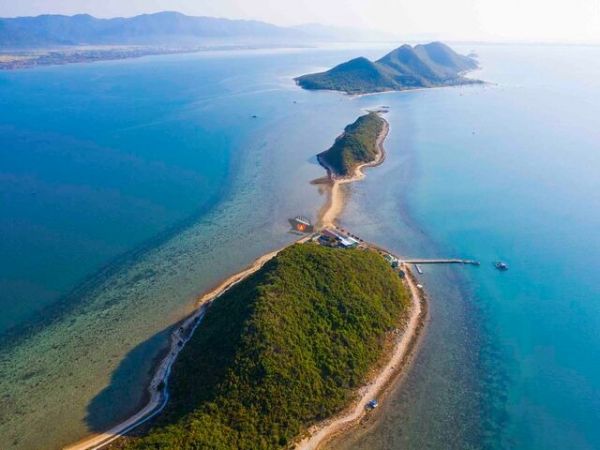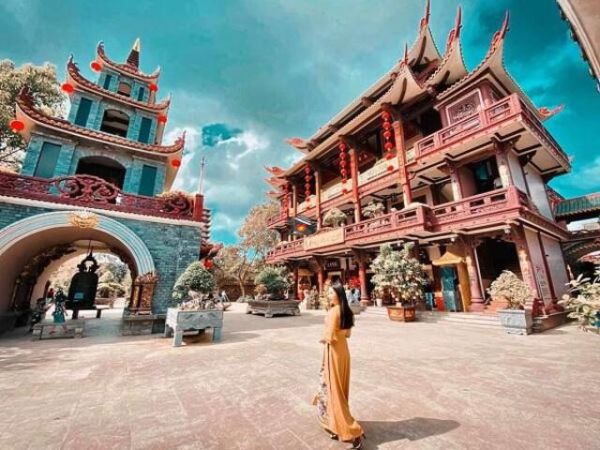CUC PHUONG NATIONAL PARK VIETNAM

Cuc Phuong National Park Vietnam. Cuc Phuong's terrain, which is spread across two limestone mountain ranges, is home to a thriving ecology. Cuc Phuong's rocky outcrops include important pale ontological and anthropological remnants, including a fossilized marine reptile ranging from 200 to 230 million years ago.
Cuc Phuong National Park Vietnam Information:
Address: Ninh Binh Province, Vietnam
Cuc Phuong National Park is Vietnam's oldest, having been established in 1962. Cuc Phuong, located about 120 kilometers southwest of Hanoi and tucked between the provinces of Ninh Binh, Hoa Binh, and Thanh Hoa, has an interesting cultural and natural history, as well as breathtaking beauty.
The Muong Hill tribe's emerald rice terraces and traditional stilt dwellings give way to magnificent limestone mountains. This densely forested region is home to some of Asia's rarest animal and plant species. It is hardly surprising that scholars, naturalists, enthusiasts, and environmentalists are all drawn to this part of the world.
The old forest is home to more than 2234 vascular and non-vascular plants, 122 reptile and amphibian species, and 135 animals, including the Clouded Leopard, Delacour's Langur, Owston's Civet, and Asian Black Bear. There are also a whopping 308 recorded bird species. Visitors in April and May should have the opportunity to witness hundreds of beautiful butterflies. Cuc Phuong's terrain, which is spread across two limestone mountain ranges, is home to a thriving ecology.
Cuc Phuong's rocky outcrops contain valuable pale ontological and anthropological remnants, including a fossilized sea reptile dating back 200 - 230 million years, as well as the remains of prehistoric people who lived in the forest around 7500 years ago. Cuc Phuong was once home to the Muong minority people, and a few isolated villages along the park's perimeter still contain this fascinating people and their distinct culture. Visitors to these settlements can still observe ancient stilt dwellings, waterwheels, bamboo rafts, and brocade looms.
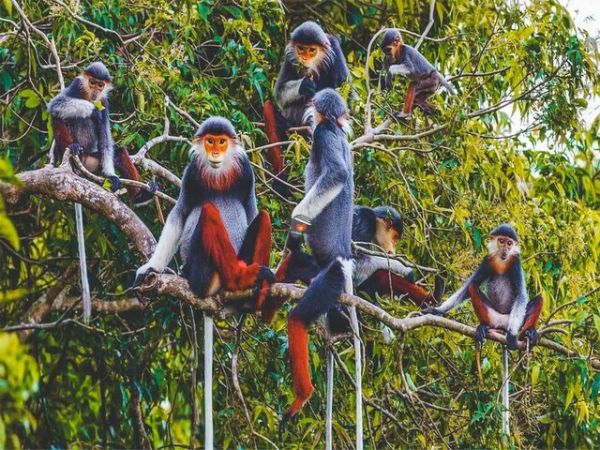
Cuc Phuong National Park Vietnam Bio-Diversity:
Limestone Karst Landscape:
Located on 2 limestone mountain ranges, the landscape of Cuc Phuong contains a wonderfully rich ecosystem. The rocky outcrops of Cuc Phuong form the site of valuable pale ontological and anthropological vestiges, including a fossilized sea reptile dated at 200 - 230 million years old, while the remains of prehistoric people who lived in the forest some 7500 years ago are also to be found in the numerous mountain caves.
Culture:
In earlier times, Cuc Phuong was home to the Muong minority people and to this day a few scattered villages around the park's periphery still house these interesting people and their unique culture. If you visit these communities you can still see their traditional stilt houses, waterwheels, bamboo rafts and brocade looms.
Around Cuc Phuong:
From Cuc Phuong, we would suggest that you take a trip to Van Long, where you can see Delacour's Langurs in the wild, to Ngoc Son and Pu Luong Nature Reserve - all within easy access. Just ask us and we will set you on the right path.
Framework:
Park Authorities
Functional Department:
- Personnel Departments.
- Plan - finance Department.
- International Cooperation & Scientific Department.
Units:
- Forest Protection Department.
- Environmental Education & Services Center.
- The Organism Rescue, Conservation and Development Center.
Remarkable Achievements.
Year 2000, the Government granted the title of Hero of Labour in the Innovation period.
Year 2002, the Government granted the Independence Medal as the park has gained many achievements in nature conservation and many other noble rewards.
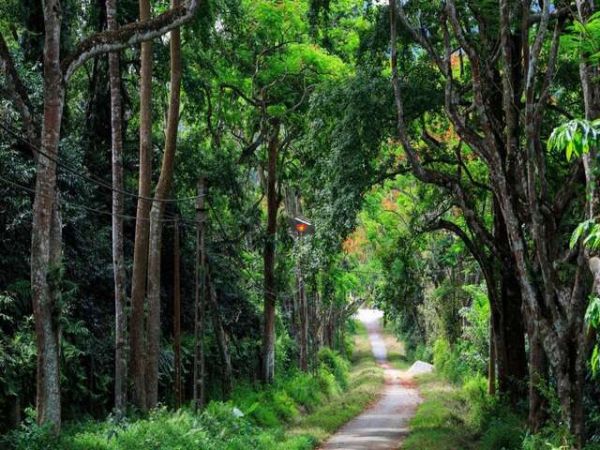
Fauna:
Cuc Phuong is home to 659 vertebrate animal species, including endangered and rare species such as Delacour's langur (Trachipythecus delacouri), Clouded Leopard (Neofelis nebulosa), Serrow (Carpicornis sumatraensis), cá Niếc Hang (Silurus cucphuongensis), and red-bellied squirrel (Callosciurus erythraeus cucphuongensis).
Delacour's langur was assumed to be extinct 50 years ago until it was found in the early 1990s. Cuc Phuong's insect populations are extremely extensive, with 1899 species and forms identified from 169 families and 33 orders. There are numerous unusual species, such as the walking stick insect, which resembles twigs of various colors and can only be identified when they move. During the summer, visitors may be able to witness millions of vivid butterflies along the road or in woodland streams.
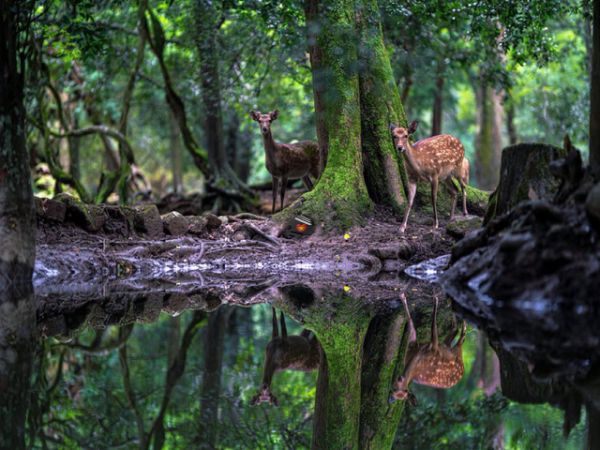
Flora:
Cuc Phuong National Park is well-known for its profusion of flora and trees. Over 2000 plant species have been identified, including gigantic individuals such as the 1000-year-old tree and the ancient tree, whose buttress roots have developed into a massive wall in the heart of the forest. Strangler figs may also sprout on other trees and choke them as they climb into the canopy.
Cuc Phuong's vines have numerous shapes, with some growing python-like to reach a hundred meters in length and reaching across the forest's levels.
The old trees, strangler figs, vines, and other vegetation work together to create a wild, enigmatic, and spectacular tropical rainforest environment.
Cuc Phuong National Park scientists have also identified 12 new kinds of trees, including an extremely rare orchid (Vietorchis aurea Aver. & Averyanova). This species only lives in a small region of Cuc Phuong National Park.
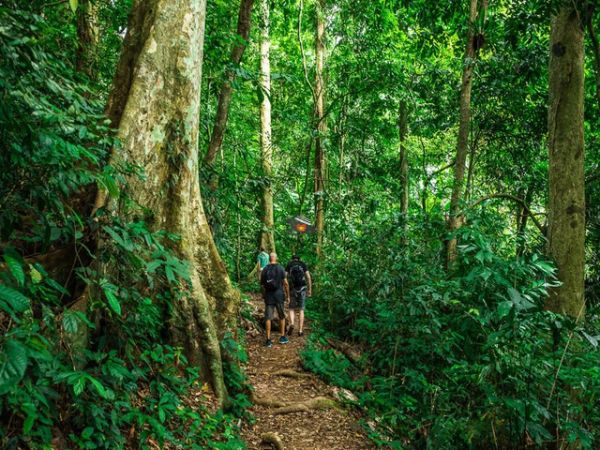
Tourism Activities in Cuc Phuong National Park Vietnam:
1. Trekking across the main forest:
The park offers excellent hiking options, and you might spend days wandering through the forest. Popular pathways will take you to several ancient trees, caverns, and Muong communities. Park officials can supply you with simple maps to help you locate the well-marked trailheads.
However, a guided tour is the most effective and instructive method to make the most of both short and lengthy hikes. Longer hikes to Ngoc Son and Pu Luong Nature Reserves, as well as overnight excursions and camping vacations, are also options.
2. Community-based ecotourism and homestays:
Cuc Phuong's woodlands are extremely valuable culturally, offering livelihood resources to residents. However, forests and their resources are always under attack. Community-based ecotourism efforts are transforming underprivileged groups into local stakeholders, providing incentives to support conservation.
Why not embark on a trip to Khanh's Muong hamlet, or to the villages in Ngoc Son Nature Reserve or Pu Luong Nature Reserve, where the friendly locals offer one or two nights' homestay in their traditional stilt houses? While at the village, you will live as part of a family, dine together, learn about their culture, and enjoy bamboo river rafting!
3. Wildlife Spotting During Night:
The park may arrange night-spotting tours into the core forest. These unique trips provide an opportunity to observe the park's most elusive animal species, including the Black Giant Squirrel, Indian Flying Squirrel, Samba Deer, Loris, and various tiny predators.
4. Bird Observing:
Cuc Phuong is home to an abundance of gorgeous tropical birds, many of which are native to Vietnam and Indochina. Some of the 308 unusual bird species you could see are the Silver Pheasant, Red-collared Woodpecker, Brown Hornbill, Bar-bellied Pitta, and so forth. Cuc Phuong is increasingly becoming a popular location for scientists and birdwatchers alike. Birdwatching is best done in the early morning or late afternoon.
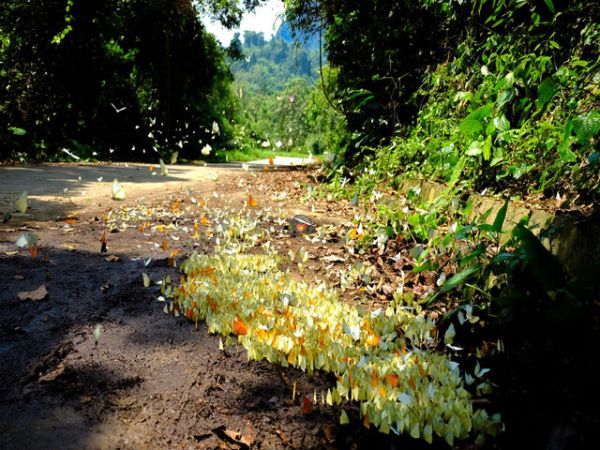
5. Cycling:
Cycling in the jungle is a terrific way to explore Cuc Phuong. Biking provides visitors with not just serenity and pleasant air but is also an excellent method to see the national park's more reclusive creatures and birds. (Mountain bike rentals are offered in the national park).
6. Spotting amphibians, insects, and reptiles:
Cuc Phuong also supports a diverse range of amphibians, insects, and reptiles, many of which are unique to the area and Vietnam. Some species are common and have unusual traits, such as vipers, green tree frogs, and stick insects.
7. Tour ecological hotspots:
So far, Cuc Phuong contains 43 biodiversity hotspots. All of them are recognized by the National Park's Scientific Department and provide a good chance to study and observe a variety of tropical plant species.

8. Traditional musical performance:
Cuc Phuong was a hamlet of generations of Muong minorities, each with their distinct customs. While visiting the park, you can experience traditional music and dances of various ethnicities performed by young Muong girls and boys from the surrounding area. This exercise was designed to conserve and bring to life the cultural traits of the Muong and other minorities, allowing you to learn more about Vietnam's minorities.
9. Kayaking:
During your stay at the park, you may engage in a variety of exciting amusement activities, including kayaking on the artificial Mac Lake or the natural lake of Yen Quang.
10. Visit the first Carnivore and Pangolin Education Center in Vietnam:
Visit Save Vietnam's species' Carnivore and Pangolin Education Centre, located 500 meters from Park Headquarters, to learn more about Vietnam's magnificent but unfortunately threatened species. At the interactive education area, you may see rescued animals in well-designed and large enclosures and learn their tales. Watch films about rescuing and releasing rare and highly endangered pangolins; see the traps used to hunt endangered wildlife; see the creatures' tracks and hear their cries. A wealth of information about Vietnam's carnivores and pangolins is also available.
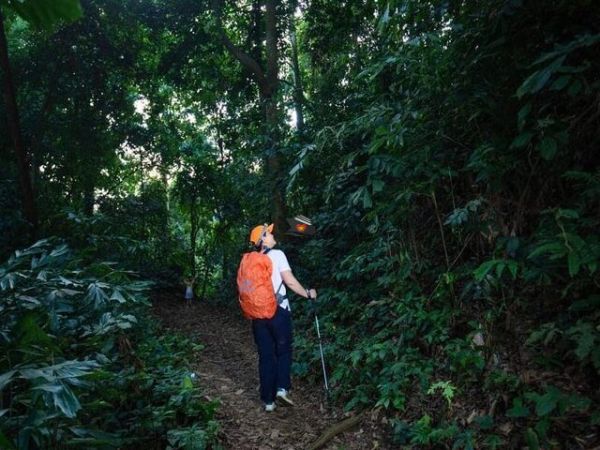
Hotline/ WhatsApp: +847-6666-0606
Email: info@friendlytravel.vn







